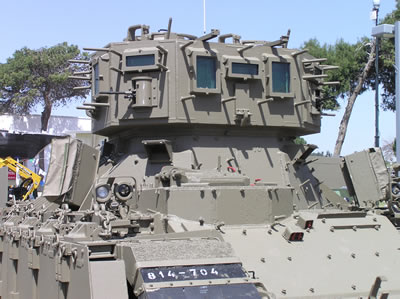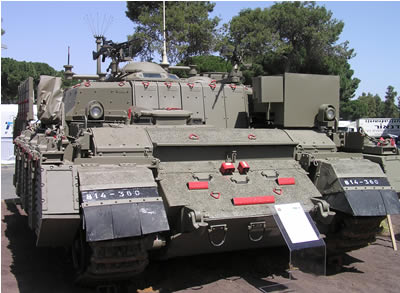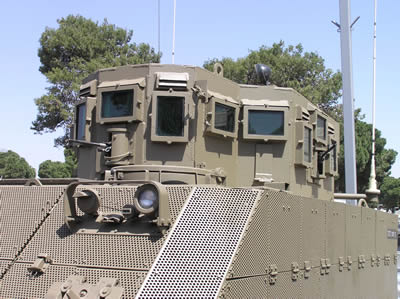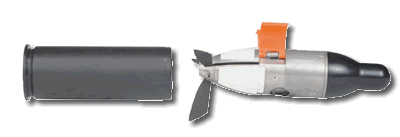Elisra’s Passive (EO) Missile Warning System (MWS) provides a key element in advanced self protection systems for fighter aircraft, helicopters, transports and commercial aircraft. can also track a threat throughout the engagement. By using infrared imagery and signal processing, PAWS-2 detects and tracks incoming missile’s hot plume as it appears within a protective sphere surrounding the aircraft. The system discriminates between threatening and non-threatening missiles, by evaluating the missile’s trajectories. When a threat is detected, PAWS-2 alerts the aircrew and automatically activates countermeasures (flares, chaff, decoys and DIRCM). PAWS can track the threat throughout the engagement. After detecting a missile threat, the system filters the background clutter by a applying several processing techniques, including narrow spectral window, optimized for real-time signal processing, and by applying an adaptive threshold. Threat assessment is determined by a rapid target algorithm, which tracks each threat frame-by-frame, and analyzes target maneuverability, relative position, inertial data and angular velocity and intensity. When it detects a threatening missile, PAWS-2 automatically alerts the pilot with a warning signal and activates countermeasures while also providing accurate information to Directional Infra-Red Counter-Measures (DIRCM). PAWS-2 also provides threat information to other EW systems as part of an EW suite, as well as to avionics subsystems. It can also operate as a stand-alone system. Designed and developed specifically to protect fighters from SAMs and MANPADs, PAWS-2 systems are designed for fighter aircraft and has already deployed with Israel’s F-16Is. PAWS-1 systems are already deployed on IDF combat and assault helicopters.
Advanced 120mm Mortar Munition
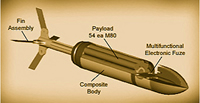
XM984 Extended Range Mortar Cartridge (ERMC) is currently under development for the US Army 120 mm M120/M121 mortar system. Compared to a conventional M934 bomb fired from this system will reach a maximum range of 7,200 metres, the XM984 is expected to almost double the range, to reach 12,000 m’. The range extension being produced by a nose-mounted rocket motor that cuts in at a pre-determined point during the bomb’s trajectory. The rocket will fire 12 seconds after the launch, and burn for a period of four seconds. After a predestinated delay, 54 M80 grenades will be released from the bomb, effecting a target are 233 percent larger than an HE bomb.
XM29 Objctive Individual Combat Weapon (OICW)
The XM29 Objective Individual Combat Weapon (OICW) is under development as future replacement to the current M16/M4/M203 individual weapon system. The new weapon will have twice the effectiveness, standoff range (beyond 1,000 m’) and probability of incapacitation of targets compared to current M4/M203 weapons. It aims to combine the lethality of 20-mm programmable air-bursting munitions and 5.56-mm NATO ammunition combined with rugged, full-solution fire control system which will provide Future Force Warriors (FFW) with the firepower, precision and control they are required to use. The weapon is designed as a lightweight system, integrated with built-in a laser range finder and laser pointer, and illuminator for target acquisition. Aiming cues will be projected on the optical sight, based on ballistic computations processed by an integral fire control computer. The weapon will programmable switches for operation of various systems, such as radio, image recording and targeting. The systems will also have environmental sensors, electronic compass, target tracker, laser steering and thermal modules. Under development since 2002, the new weapon is expected to mature by 2006 and enter full production by 2008.
The U.S. Army is exploring a new 5.56-mm carbine design designated XM8 Lightweight Assault Rifle. Now being developed under a contract modification awarded by the U.S. Army Armament Research, Development and Engineering Center at Picatinny Arsenal, N.J., to Alliant Techsystems, the XM8 is based on the 5.56-mm kinetic-energy weapon component of the XM29 OICW. Offering levels of integration, modularity and scalability, the XM8 will be approximately one pound lighter than the M4 carbine.
INTEGRAN – Ceramic Armor Manufacturer
Integran utilizes a new nanoparticles based process of armor plating, resulting in increasing toughness index by 2.5 times over the US Army specifications for FCS. According to Integran, using these manufacturing techniques and materials, the weight of armor plates can be reduced by a factor of 7, compared to current materials.
Mobile Satellite Broadcast Terminal
ERA has developed a low cost, very low profile scanning antenna allowing direct commercial broadcast TV services to be delivered to mobile users such as automobiles on the move. The antenna is designed for operation at Ku band, packed in a 100mm thick module. The technology can readily be extended to Ka-Band and to other applications such as military or commercial aerospace. The terminal is the size of a laptop computer and has been used for real time data transfer over satellite at data rates of up to 256kbps.
Future Soldier Technologies
Future Soldier Programs (FSP) are addressing changing requirements for infantry systems, transformed from armored and mechanized mobile combat to littoral, urban and surgical type low-intensity conflict operations. Among the systems considered for such programs are a family of helmet-mounted integrated systems, designed for Land Warrior.
These systems include helmet mounted display and daylight video sight. For the future Force Warrior (FFW), an integrated headgear is designed, providing the dismounted soldier with increased situational awareness. Kaiser Electro-Optics Inc, from the Rockwell Collins company has developed a compact, helmet mounted high resolution Super VGA display that can be integrated with standard hand held or wearable computers.
 Designated ProView SO35 it uses a monocular full-color AM OLED display. The system weighs 346 gram, of which 146 gr. are helmet mounted. The display area provided by the system is 28 degrees wide by 21 deg. high, at a resolution of 800×600 pixels or 22×17 at a resolution of 640×480 pixels.
Designated ProView SO35 it uses a monocular full-color AM OLED display. The system weighs 346 gram, of which 146 gr. are helmet mounted. The display area provided by the system is 28 degrees wide by 21 deg. high, at a resolution of 800×600 pixels or 22×17 at a resolution of 640×480 pixels.
A different type of helmet mounted display is provided for soldiers operating from combat vehicles. The HTVS offers continuous monitoring of electro-optical sensors, even when the soldier is observing from the vehicle, operating machine guns or other systems. The HTVS integrates a head mounted display, head tracking system, high speed gimbals and infrared, thermal or Image intensifier camera.
LVOSS – Light Vehicle Obscurant Smoke Syste
Non lethal munitions can also be fired from the 66mm light vehicle obscurant smoke system (M304 LVOSS) launchers. Typical non lethal munitions for such application include the rubber ball and flash-bang grenades. Both munitions are designed to affect area targets at longer standoff range. They can be fired at a range of 80 – 100 meters and burst at the impact area. The flash/bang is used mainly for temporary distraction and warning, while rubber-ball non-penetrating payload is used to repel crowds.
Dissuader laser Illuminator
This hand held laser “flashlight” generates an extremely bright, variable width beam of red light. The beam is certified eye-safe at all ranges and under all tactical conditions. The laser beam sends a language-dependent warning and challenge that forces adversaries to signal their intent to retreat surrender or continue aggressive behavior. It dissuades and/or delays adversaries by producing an overpowering glare or flash blinding the individual. The laser illuminator is suitable for law enforcement missions where revealing a drawn weapon is not advisable. This device can be used as handheld augmentation to sidearms carried on law enforcement missions; use of sidearm enables quick conversion to lethal force.
Imaging (Visual / IIR) Precision Guidance System
Imaging sensors were used with precision guided weapons since the early 1970. Until recently, lack of processing power and datalink capacity have limited the use of such guidance techniques to relatively short range direct attack weapons (such as Maverick) and medium range strike missiles (such as Have Lite and SLAM). With the introduction of powerful thermal imaging sensors and signal processors, autonomous (fire and forget) missiles are now available for anti-tank uses. Similar capabilities are also provided to support standoff aerial weapons, both for autonomous and guided weapons. These weapons offer high precision, and inherent battle damage assessment capability which cannot be provided by GPS, SAL or radar directed weapons. Furthermore, EO sensors enable important functions which are becoming essential for modern warfare – such as positive, automatic or manual identification of targets, engagement of moving targets, and dynamic aimpoint selection even with autonomous weapons, with the use of target recognition and tracking (ATA/ATR). While “man in the loop” capability of EO guided weapons is extremely useful, deployment of many such weapons in simultaneous attack require significant investment in bandwidth and datalink coordination and support, which can complicate the execution.
IDF Vehicle Protection Program
In order to reduce the exposure of its troops to attack by small arms, demolition charges and anti-tank weapons, the IDF is currently operating several types of armored vehicles, protected at different levels, designed to meet the perceived threat at each region.
The heaviest armored elements deployed in the current LIC combat are the Merkava Mk 3 tanks, heavy armored troop carriers and heavy engineering vehicles. The Merkava Mk 3 LIC was slightly modified to reflect some of the recent lessons learned during the armored employment in LIC.
The Southern command, responsible for operations at the Gaza strip, where sophisticated explosive charges and determined attacks against armored vehicles are frequently encountered, is operating heavy APCs based on the Centurion hull, mounting an elevated infantry fighting compartment, which enables soldiers to observe and effectively engage targets in built up terrain. The heavy APC was fielded at the beginning of the current conflict in 2000. The IDF is planning to introduce a new and upgraded version by 2005.
The Northern command, responsible for the security of the Lebanon Border, fields a heavy APC called Nakpadon, which is equipped with special, much heavier armor protection systems designed to counter more sophisticated threats, including advanced anti-tank missiles and large standoff charges. The Nakpadon is also equipped with an electronic warfare broadband jamming system disrupting electronic remote control activation of roadside bombs.
The Golani Brigade is using a different vehicle, the Achzarit Infantry Armored Fighting Vehicle (AIFV) which is based on a modified T-55 chassis.
Further additions to the IDF order of battle are the introduction of armored wheeled vehicles, these will probably be the new 8×8 Stryker APC currently being procured for the US Army but the IDF decision has yet to be made.
A different approach was implemented with the preparation of the M-113 APC to continue its role in low intensity conflict. The current vehicle is fitted with surrounding mesh armor and an elevated fighting compartment, installed on the top of the existing fighting compartment. Beginning in 2005, the improved M-113 APC will be fitted with a new hybrid armor suite, new engine, improved steering mechanism and remotely controlled weapon system.
The protection of military forces is not limited to combat fighting vehicles, as troops operating in high risk areas must be protected continuously, including escort, transportation, logistics support and non combat activities. Current commander’s vehicles are based on the Soufa 4x 4 armored vehicles. By 2005 an improved commander’s vehicle, based on the Hummer, will be fielded, and augmented by improved Soufa. The IDF Hummer tactical vehicles are also fitted with enhanced protection, when compared to the standard set provided by the manufacturer. The IDF is currently buying protection suits from the USA, due to lack of local funding. These vehicles will be augmented in the near future by heavy armored cars, which are currently being evaluated Armored logistical vehicles, as well as protected patrol vehicles could also utilize the new Wolf platform, unveiled at LIC-2004 by RAFAEL. The IDF also evaluating a new high mobility vehicle – the Flyer Defense ITV-1 all terrain vehicle, which uses the same design as Light Strike vehicle used by the Army of Singapore.
FIREFLY – Miniature “Video Grenade”
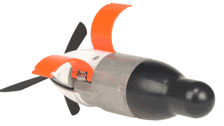 FIREFLY, under development at RAFAEL is a miniature intelligence gathering projectile weighing 145g and launched from a standard M203 grenade launcher. The projectile is designed as a sub-caliber munition, 38mm in diameter and 155mm in length. When launched over a typical 600-m range, FIREFLY flies an 8-second flight, and transmits real-time photos of the area lying directly below. FIREFLY provide small infantry units with organic capability for tactical intelligence gathering. The system provides quick orientation awareness, including threat and armed/unarmed personnel identification. FIREFLY is suitable for operation in any terrain, including urban area.
FIREFLY, under development at RAFAEL is a miniature intelligence gathering projectile weighing 145g and launched from a standard M203 grenade launcher. The projectile is designed as a sub-caliber munition, 38mm in diameter and 155mm in length. When launched over a typical 600-m range, FIREFLY flies an 8-second flight, and transmits real-time photos of the area lying directly below. FIREFLY provide small infantry units with organic capability for tactical intelligence gathering. The system provides quick orientation awareness, including threat and armed/unarmed personnel identification. FIREFLY is suitable for operation in any terrain, including urban area.
The projectile is equipped with two CCD cameras. Throughout its flight, the video cameras record the ground scene lying directly under its trajectory. The video stream is transmitted in real-time to the operator in the field. Video can be viewed in real-time, recorded and analyzed on the PocketPC / PDA console or transmitted to other users, via wireless communications to other pocket PC.
The console is comprised of a standard pocket PC, coupled to a portable add-on receiver and antenna. The system is in an advanced stage of development and has passed firing tests which have proven concept worthiness.
M3 – Carl Gustaf Weapon System
The Garl Gustaf Weapon System is a multi-role man portable “artillery” providing infantry units the ability to engage any type of target, including armor, building, bunkers, personnel etc. The system enables deployment of smoke and illumination charges. The M3 system relies on a 84mm reloadable, recoilless launcher and a family of munitions including the HEAT 751 which uses a tandem warhead to defeat over 500mm of steel including reactive armor (ERA). The rocket is designed to pass through bushes or scrub without activating the precursor charge, thus enabling firing from ambush.
When ERA penetration is not required, the HEAT 551 variant can be used, offering extended range of up to 700 meters. For combat in urban terrain, M3 can be loaded with HEDP 502 dual purpose rocket which can defeat light armor, concrete, bunkers or brick walls. The HE 441 charge was designed specifically for engagement of soft targets. Unlike the other rockets, it is equipped with an impact or delay fuse, to enable air-burst effect. The warhead has 800 steel pellets enclosing the high explosive charge.
A different load – ADM 401 can be used for close-in protection of ambush teams armed with the M3. This rocket carries a payload of 1,100 flechettes and has an effective range of 100 meters.
The flechettes are released and accelerated by gas pressure in a cone, resulting in distribution of 5 – 10 flechettes per square meter at a distance of 100 meters. Smoke, illumination and training rounds complete this impressive weapon system.
EL/K-1891 Mobile SATCOM Terminal
The EL/K-1891 mobile / airborne SATCOM terminal is designed for X or Ku bands. The antennae uses 25×10 cm plannar array or 80cm dish. Mounted on dual stabilized pedestal. In the dismounted ground satellite communications station, the terminal use a commercial 9.3 meter dish. System is derived from an airborne platform developed for the IAF F-16I and AISIS SIGINT aircraft.
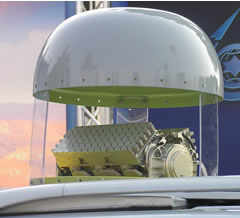
AT4 – Light Anti-Armor Weapon
The AT4 CS / CS HP was designed especially for urban combat – the anti-armor weapon (CS HP) uses an 84mm fin-stabilized rocket, armed with high penetration shaped charge which provides armor penetration capability exceeding 500mm of steel equipped with special internal ballistics allowing it to be fired from confined spaces such as tight jungle, in front of an obstacle or with own troops in close vicinity. The weapon has a high hit probability up to 300 meters. The weapon is carried in a dispensable canister/launcher weighing 7.8kg (the AT4 HEAT version which is not designed for use in a confined space weighs 6.7 kg and, has higher muzzle speed but lower armor penetration > 420mm).




